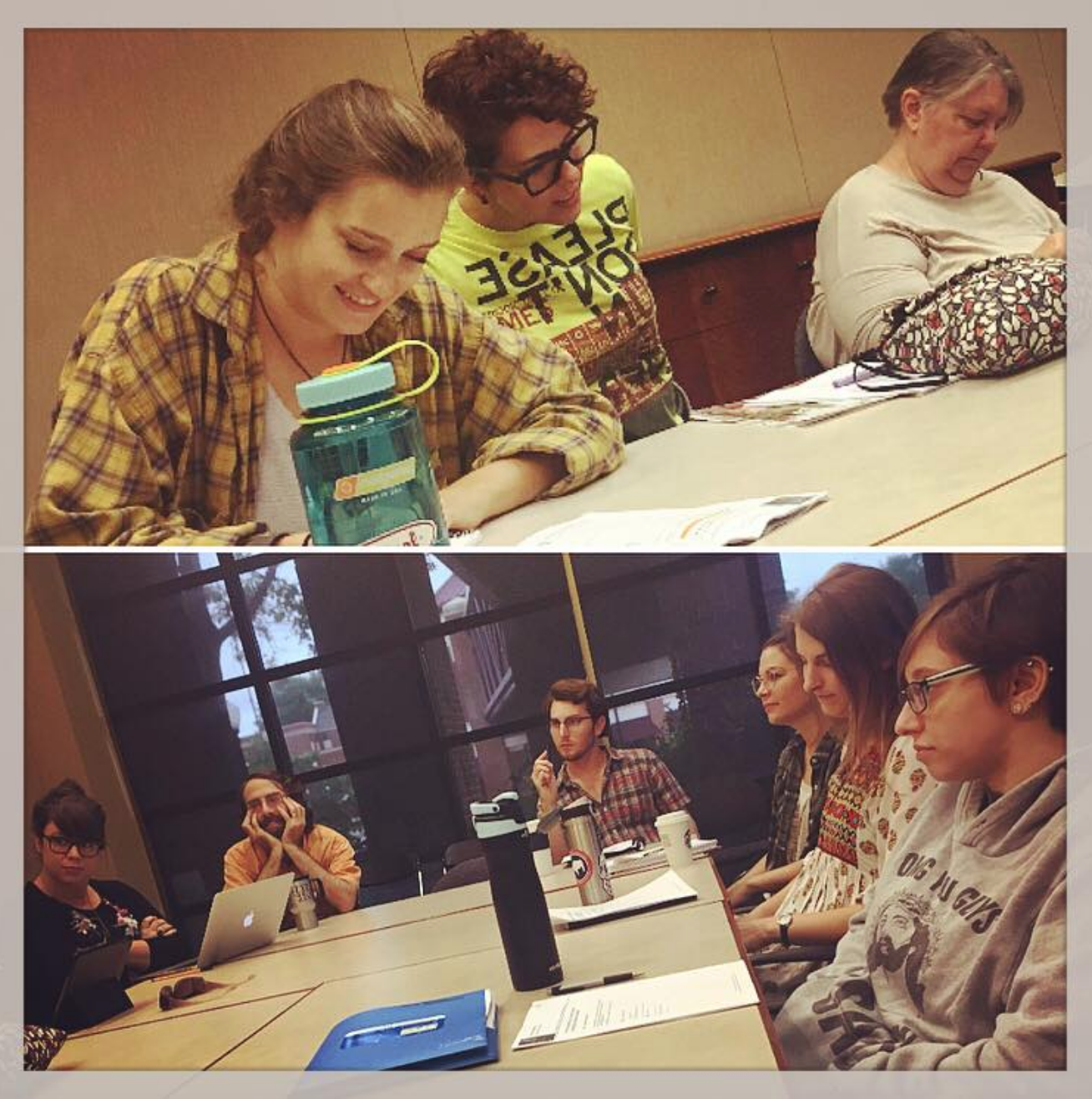
MA Students and faculty met the other day to discuss the article chosen for this meeting of our regular journal group – which just so happened to be an article Prof. Steven Ramey and I coauthored. The article, titled Sourcing Stereotypes: Constructing and Challenging Simplified Knowledge, is made up of two main parts: a critique of a chart (and its corresponding citations) from a textbook in the nursing field concerned with what we took to be stereotypes (some of which religiously-based) in how different populations tolerate or respond to pain, and a second, a similar, though perhaps less obvious, part which was a critique of textbook presentations of groups in the field of religious studies. While having both authors in the room certainly played a role in how the article was examined, the enthusiasm of the group of people present for the discussion played the most vital role in the development of a robust, engaging and productive dialogue about the article itself. For, without conversation partners that help you explore the critical questions you yourself are working to answer, your writing process and the claims you make in your writing will not be able to grow and address new issues.
The discussion opened by highlighting how various components of the writing and publishing process have become integrated into the rest of my work, such as seeing writing (even single-author writing) as far more collaborative than it might at first appear. For instance, in co-writing, I never once felt there was a time where you could say this article was a product of either of us independently. From Family Guy references to generous critical commentary, the authorial voice of the paper did not require us to adopt a homogenous tone because its overarching goal was to investigate the value of organized heterogeneity. That is not to say that we were perfectly happy with the final version that we submitted for peer review and, then, publication. In fact writing, as well as co-writing (at least in my limited experience in terms of this one article’s production), is an ongoing process in which there are many moments where authors are dissatisfied with what we write. In the case of this project, this disagreement, though, was where we were able to tease out exactly what we were discussing and how we thought it might be discussed in lieu of other audiences. For there is no way to write to all readers’ sensibilities and you must agree to present your work in certain ways in order to communicate it beyond your own imagination.
Keeping this idea of an engaged writer in mind, some of those attending were interested in what readers we had imagined for the article and how we went about writing to those audiences. For example, Richard Newton asked about my methods for evaluating a source’s validity while Emily Crews invited me to consider what practical functions simplified knowledge can serve in venues where a detailed, nuanced explanation is not permitted. The questions seemed to be suggesting that through transparent conversations about our own limits, we, as writers, could retain nuance in a way that it is accessible for various audiences. Thus, the limits imposed on our writing, by us as the authors or by the audiences that consume it are, for pragmatic reasons, not necessarily working against our larger objective. In fact, such limits seem to serve as an example of how knowledge can be simplified without compromising nuance.